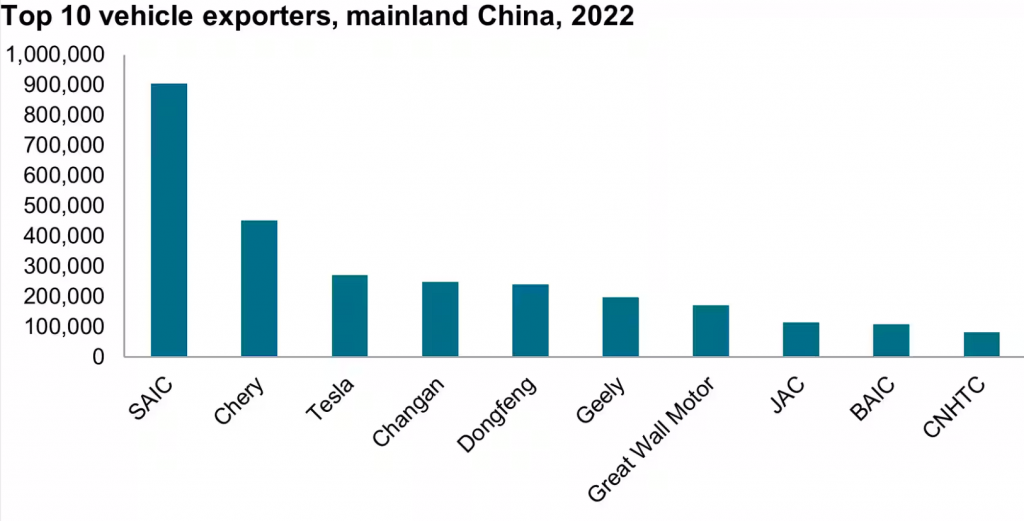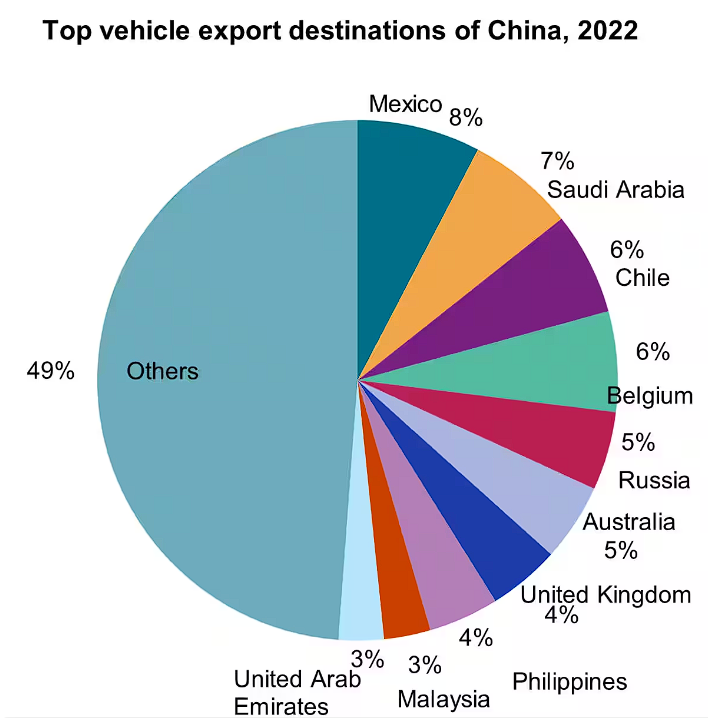How Chinese Automakers are Reshaping the Global Auto Market (PDF)
China’s automotive industry is rapidly transforming into a global powerhouse, making significant strides in the export market and reshaping the dynamics of the traditional automotive landscape. With the remarkable growth in vehicle exports and advancements in technology and design, Chinese automakers are poised to challenge the dominance of established global players. In this blog post, we will delve into China’s emergence as a leading automotive exporter, its strategies to penetrate new markets, and the potential hurdles it faces along the way.

China’s Rising Export Power
In 2022, mainland China surpassed Germany to become the world’s second-largest automotive exporter, setting its sights on claiming the top spot by 2023. Bolstered by a year-over-year export growth rate of 57%, China exported over 3 million vehicles, with battery-electric vehicles accounting for a significant portion of the total. The momentum has continued into 2023, with exports surging by an impressive 76% in the first quarter alone, surpassing even Japan as the world’s leading vehicle exporter.
Chinese automakers have made remarkable strides in improving their technology, design, and manufacturing processes, enabling them to gain market share in new regions. The focus on addressing brand recognition issues has been crucial for their growth in the European market. However, navigating political risks and regulatory challenges remains a concern as they expand their footprint worldwide.
While Chinese automakers face brand recognition hurdles and strong consumer loyalty to domestic brands in European countries like Germany and France, they are making headway in this highly competitive market. Investments by companies like SAIC in the British MG brand have provided an opportunity to leverage historical presence for establishing overseas marketing footholds. Chinese automakers are gradually earning trust and credibility through improved safety ratings and competitive pricing, offering attractive alternatives to European counterparts.
Opportunities in Russia, Central Asia, and North America
The withdrawal of major car manufacturers from the Russian market due to political tensions has opened doors for Chinese brands like Chery, Haval, and Geely. These brands are capturing market share and establishing a dominant presence, especially in the mid- to high-end segments. Central Asian markets, particularly Uzbekistan, have also attracted Chinese automakers due to favorable economic ties and growth potential. However, political risks in these regions need to be carefully considered.
While China has emerged as a significant exporter to Mexico, entry into the United States remains challenging due to political tensions and policies favoring local manufacturing and sourcing. The focus of Chinese automakers has shifted toward Europe and Southeast Asia, where they are more likely to gain scale and obtain approvals for local production facilities.

China’s Impact on Global Automotive Industry
The rise of Chinese automakers not only affects economic growth and technological advancements but also reflects China’s growing influence in the global market. As they gain market share in different regions, these automakers are disrupting established players and compelling them to adapt to a new reality. The efficiency and production capabilities of Chinese factories, especially in the electric vehicle segment, are instrumental in driving the global adoption of battery electric vehicles.
China’s automotive industry is undergoing a remarkable transformation, rapidly expanding its presence in the global export market and challenging established players. With a focus on technological advancements, market expansion, and brand recognition, Chinese automakers are poised to disrupt traditional automotive hierarchies. While obstacles such as political risks and regulatory challenges persist, the industry’s growth trajectory indicates that China’s influence on the global automotive landscape will only continue to strengthen in the coming years.





